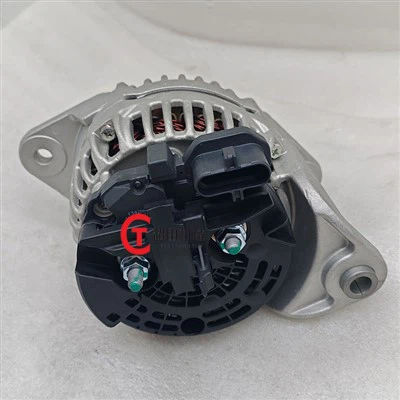Hey there! As an electric parts supplier, I've seen firsthand how crucial transformers are in electric power systems. In this blog, I'm gonna break down what transformers do and why they're so important.
What's a Transformer Anyway?
A transformer is a passive electrical device that transfers electrical energy between two or more circuits through electromagnetic induction. It's like a magical bridge that can change the voltage level of an alternating current (AC) while keeping the frequency the same. You might be wondering, why do we need to change the voltage? Well, that's where the real magic of transformers comes in.
Step - Up and Step - Down Transformers
There are two main types of transformers: step - up and step - down. A step - up transformer increases the voltage from the primary winding to the secondary winding. This is super important when it comes to transmitting electricity over long distances. When electricity is generated at a power plant, it's usually at a relatively low voltage. But to reduce power losses during transmission, we need to increase the voltage. That's where step - up transformers come in. By increasing the voltage, we can decrease the current (since power = voltage x current), and lower current means less power loss in the transmission lines.
On the other hand, a step - down transformer does the opposite. It decreases the voltage from the primary to the secondary winding. When electricity reaches our homes, businesses, and industries, it needs to be at a safe and usable voltage level. That's when step - down transformers come into play. They take the high - voltage electricity from the transmission lines and convert it into a lower, safer voltage that we can use for our everyday electrical needs.
Voltage Regulation
Transformers also play a key role in voltage regulation. In an ideal world, the voltage in an electrical system would be perfectly stable. But in reality, there are many factors that can cause voltage fluctuations, such as changes in load, faults in the system, or variations in the power generation. Transformers can help maintain a relatively constant voltage level by adjusting the turns ratio between the primary and secondary windings. This ensures that the electrical equipment connected to the system receives a consistent and reliable supply of electricity.
Isolation
Another important function of transformers is electrical isolation. A transformer provides a physical and electrical separation between the primary and secondary circuits. This isolation is crucial for safety reasons. It prevents electrical shocks and reduces the risk of short - circuits between different parts of the electrical system. For example, in some sensitive electronic equipment, isolation transformers are used to protect the equipment from electrical noise and interference from the power source.
Impedance Matching
Transformers can also be used for impedance matching. In an electrical circuit, impedance is the opposition to the flow of alternating current. When the impedance of a source and a load are not matched, there can be a significant loss of power. Transformers can be designed to match the impedance of the source to the impedance of the load, ensuring maximum power transfer. This is especially important in audio systems, radio transmitters, and other high - frequency applications.
Our Electric Parts Offerings
As an electric parts supplier, we offer a wide range of high - quality electric parts, including those for various types of equipment. For example, we have the Excavator Diplay Panel VOE14390065 for Excavator EC180B EC210. This display panel is essential for monitoring the performance and status of excavators, ensuring smooth and efficient operation.
We also have the 326 - 4635 3264635 Fuel Injection Pump for E320D Excavator. A reliable fuel injection pump is crucial for the proper functioning of the excavator's engine, providing the right amount of fuel at the right time.
And if you're looking for sensors, we've got the Sensor 7861 - 93 - 2330 for 6D102 Engine PC200 - 7 PC300 - 6 Excavator. Sensors are like the eyes and ears of the excavator, providing important data about the engine's performance and other parameters.


Conclusion
In conclusion, transformers are the unsung heroes of electric power systems. They perform a variety of functions, from voltage transformation and regulation to isolation and impedance matching. Without transformers, our modern electrical infrastructure simply wouldn't work. Whether it's transmitting electricity across the country or powering the devices in our homes, transformers are essential for keeping the lights on.
If you're in the market for high - quality electric parts, we're here to help. We have a team of experts who can assist you in finding the right parts for your specific needs. Whether you're a contractor, an equipment owner, or an electrician, we've got the parts you need to keep your electrical systems running smoothly. So, don't hesitate to reach out and start a conversation about your procurement needs.
References
- Chapman, S. J. (2012). Electric Machinery Fundamentals. McGraw - Hill Education.
- Fitzgerald, A. E., Kingsley, C., Jr., & Umans, S. D. (2003). Electric Machinery. McGraw - Hill Education.






